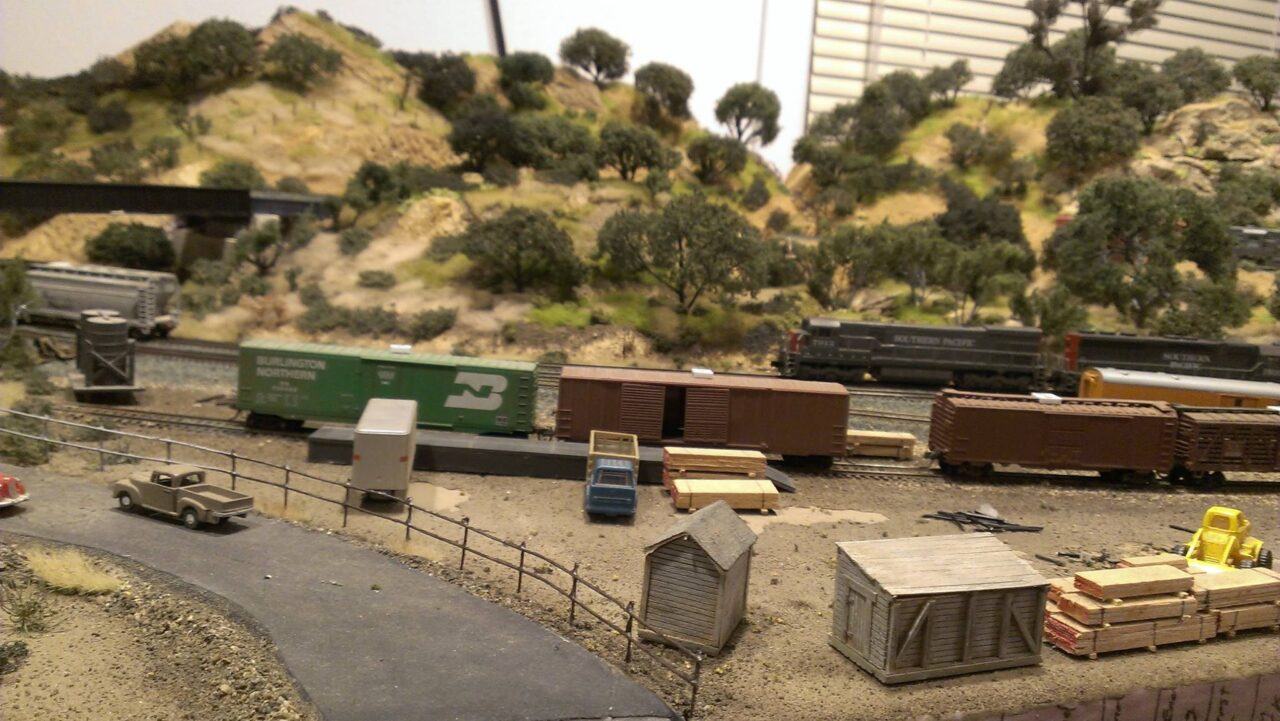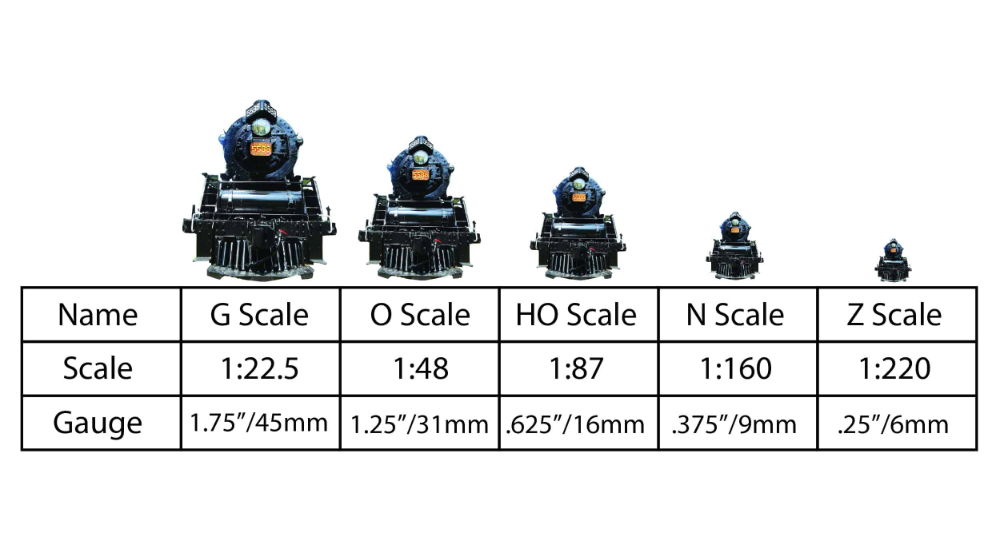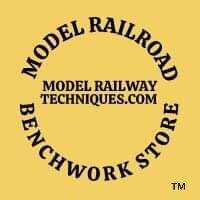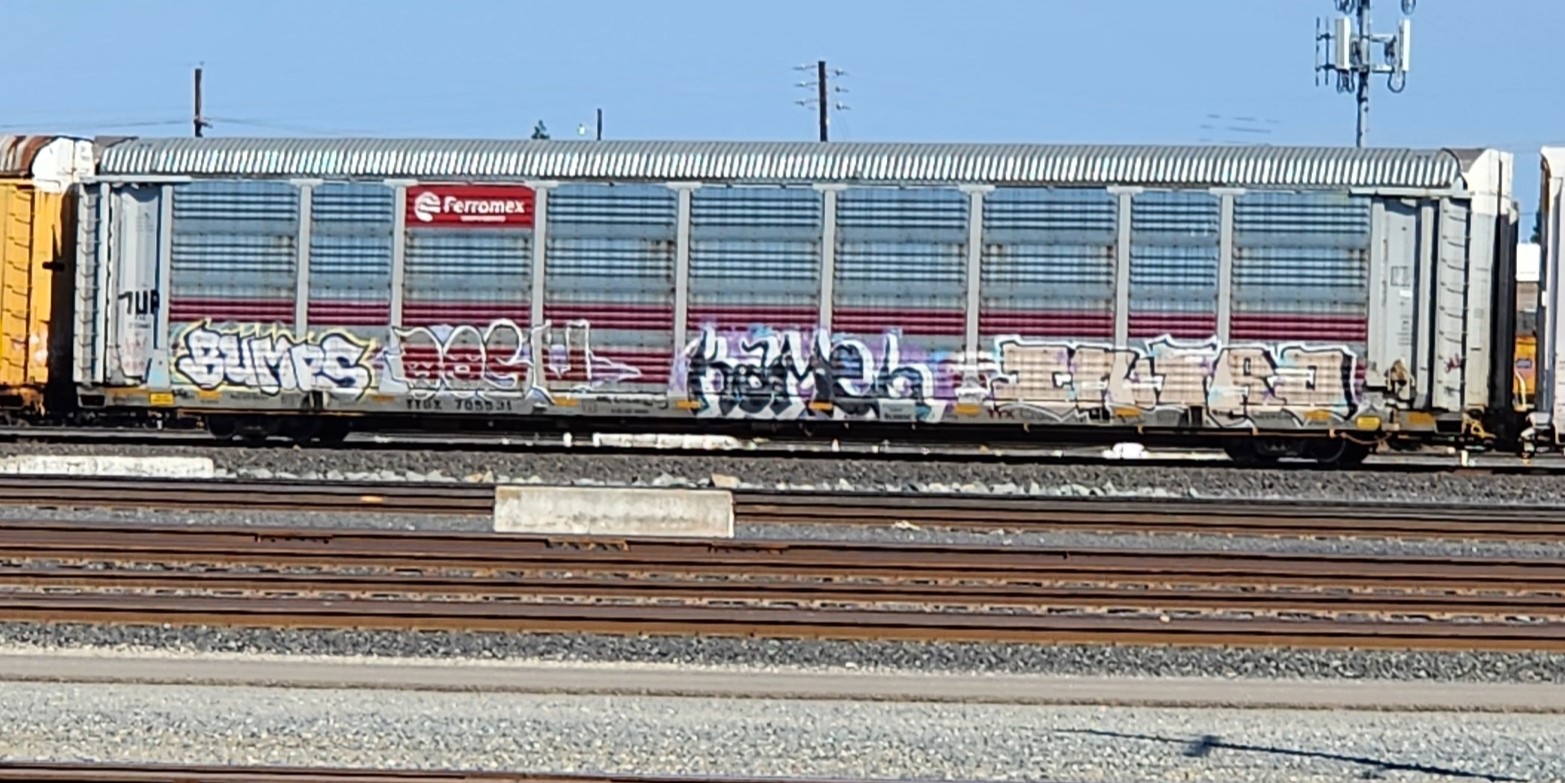Read time: about 6 minutes.

Hello, and welcome to our website, Model Railway Techniques. In this article we’re going to cover some of the basics of Model Railroading for the Beginner, the wonderful hobby of Model Railroading, and also cover some of the basic questions every beginner asks themselves. Follow along and come back often, and soon you’ll be able to create scenes like the one above on your very own Model Railway. James.
This site uses affiliate marketing links. I may earn commission on purchases made through links on this site at no additional cost to you as a consumer. For example, As an Amazon Associate, I earn from qualifying purchases made through this site if you click on a link and make a purchase. These earnings help to provide resources to make our site content better, up to date, and provide our users with a better experience. I appreciate your support, thank you.
- WHERE DO I BEGIN?
- WHAT SCALE OF MODEL TRAINS DO I WANT?
- WHERE CAN I BUY MODEL TRAINS?
- DO I NEED ANY SPECIAL KNOWLEDGE TO BUILD A MODEL RAILROAD?
- DOES BUILDING A MODEL RAILROAD REQUIRE A LOT OF SKILL?
WHERE DO I BEGIN?
The first thing you should consider on your journey towards building your Model Railroad is to do a little research. If you are reading this now, then you already have an interest in trains and Model Railroading. But every beginner in any new adventure inevitably has questions, and that is why we wrote this post to help you along.
One great resource when deciding to build your Model Railroad is to do some online searches using Google Images or similar to get some ideas of what others are doing. You can get some great inspiration from looking at other people’s Model Railways. You will get a sense of the scenery others have built, track plans, and the actual locomotives and freight or passenger cars that appeal to you. Then you can decide on a general theme for your layout and proceed from there.
We also have a lot of resources here on our site that are being added to regularly, so be sure to browse around a bit and take a look. At the end of this post, you will find some great articles that will definitely help you as you start to design and build your own Model Railroad, we highly recommend you take a look at them.
We also recommend sites like Barnes and Noble or Amazon to get valuable books and magazines that will help you build the Model Railroad of your dreams. Having these books on hand will help you for years to come, and the small investment for them is more than worth it.
WHAT SCALE MODEL TRAINS DO I WANT?
That is a very good question, as I’m sure you’ve noticed that Model Trains come in a variety of sizes from very small, to very large. There are four popular sizes of Model Trains, referred to as scale, and they range from smallest to larger like this: Z SCALE, N SCALE, HO SCALE, and O SCALE.
The size you decide on is entirely up to you, but obviously space is a consideration. For the beginner just starting out for themselves I would recommend either N SCALE or HO SCALE. These are the two most popular Model Railway sizes and therefore they have the largest selection of locomotives, freight or passenger cars, buildings, scenery items and such. For other things to consider when deciding on what scale you want, see our article on Designing Your Model Railroad.
The cost is comparable between the two when you consider the overall investment, with HO Scale being slightly more than N Scale. You can click on the links above to see what both scales have to offer and compare the pricing between the two scales. We will also be offering products on our site in the near future that we consider good values and also high quality, helping you further to narrow down the choices available to you.

WHERE CAN I BUY MODEL RAILROAD EQUIPMENT?
To be quite honest, outside of the trains, track, and buildings, there are countless places you can buy materials to build your Model Railroad! As we build our site out, we will be providing various high quality how to articles and photos, links to videos, and other resources to help you out. These will be focused on tips and techniques that will help you save money and time.
They will cover all kinds of subjects from building a suitable platform or bench work for your Model Trains, how to build Model Railroad Scenery, how to Install Track Work, how to choose and Design a Track Plan for your Model Railroad and much more.
We will also be providing more and more links to products and resources to help you build your Model Railroad. As a beginner you can take a look at Amazon or eBay, they have some affordable prices. Another source would be your local hobby store if you have one nearby. Below are some recommendations for quality N Scale and HO Scale products for you.
KATO N SCALE TRAIN PRODUCTS BACHMANN TRAINS HO SCALE TRAIN PRODUCTS
DO I NEED ANY SPECIAL KNOWLEDGE TO BUILD A MODEL RAILRAOD?
The answer is no, absolutely not! One great thing about Model Railroading, as with any hobby, is that this is something you learn as you go along. That is what a hobby is after all. There are lots of resources and people willing to help you along your journey. All you need is a little patience, some basic understanding of what kind of Model Railroad you want to build and go from there.
Keep checking back here as mentioned earlier for more and more ideas, plus help and advice by using the comments feature. Model Railroading can be a fun, relaxing lifelong hobby. And if you get stuck feel free to drop a comment below. We’ll do our best to help with track planning, track laying, scenery and all the other facets that make up this great hobby.

DOES BUILDING A MODEL RAILROAD REQUIRE A LOT OF SKILL?
The answer to this question once again is no, positively not. Building and designing your Model Railroad is something you learn and get better with over time. As you get more familiar and comfortable with the different aspects of the hobby such Track Design, Track Laying, buying and operating your Trains, you will notice that each time you learn a bit more and get even better than the last time.
Aspects such as Scenery Building, assembling Buildings and Structures, and even Operating your Model Railroad in the way a real Railroad does will become fun and motivate you to progress forward. The key here is to not get frustrated or expect too much in too little time, then the fun is taken out of it.
That is where our site will come in handy to help you along the way, and hopefully help you from making frustrating mistakes. As stated in my “about me” page, I’ve been doing this for a very long time and cannot tell you the countless hours this great hobby of Model Railroading has given me.
I hope everyone has enjoyed this brief overview of Beginning Model Railroading and be sure to check some of the links we provided above, and also check out the articles down below. We hope to see you some time soon again!
James. Model Railway Techniques
RELATED ARTICLES
- MODEL RAILWAY TECHNIQUES BENCHWORK KITS
- HOW TO DESIGN A TRACK PLAN FOR YOUR MODEL RAILROAD
- CHOOSING A THEME FOR YOUR MODEL RAILROAD
- DESIGNING YOUR MODEL RAILROAD: BASIC DESIGN IDEAS FOR THE SMALL TO MEDIUM SIZED MODEL RAILROAD
- HOW TO BUILD AFFORDABLE MODEL RAILROAD BENCHWORK
- N SCALE TRACK PRODUCTS-THE MOST POPULAR N SCALE MODEL RAILROAD TRACK AVAILABLE.
Copyright 2025 The Model Railroad Benchwork Store/Model Railway Techniques.com All Rights Reserved
If you have any questions or comments regarding this article drop a comment down below and we’ll respond back to you.
Also, please share and click the subscribe button in the bottom right corner to receive automatic updates of new posts. Your email is confidential and will NOT be shared or redistributed.
James, Model Railway Techniques.com
Last Updated on 12 months ago by James from Model Railway Techniques




I really enjoy reading about model trains and all the details that go into it. I also appreciate how you explain the model sizing. This can be very confusing to new users. While I was never able to keep a steady hand, my grandfather let me help him with his train town. He called it Pip Squeak Railways after us grandkids. Thank you for sharing this information, my son is now looking to join a model train club.
Glad you enjoyed the post, Tammy. It really is great to hear stories like yours of Model Railroading being enjoyed across generations. Congrats on your son joining a club, I hope you both come back to see the many articles that will be coming out soon.
James.
This article provides a great introduction to model railroading for beginners. I appreciate how it covers the basics, including the various scales and sizes available, as well as the different types of tracks and locomotives. The tips on planning and designing a layout are also very helpful for someone just starting out in this hobby. Overall, this article is a great resource for anyone interested in exploring the fascinating world of model railroading.
Thank you Aly! We will be expanding on those ideas soon with more in depth articles. Check back or spread the word, we would appreciate it.
James.
What a great article. Your information on how to get started brought back so many memories of my childhood. So I’m in my fifties and when I was a kid I had an HO set. I even had the bi-centennial series of the locomotive, 2 cars, and the caboose. My father got me a big piece of OSB and we put down the grass paper and build an entire city. It was a good time. I still have my trains in a box in the attic but haven’t set them up and run them in over 40 years!
Looks like I’ve got something to do in 2023!
That’s great to hear Brian, I’m glad I inspired you to get your Model Trains out of the attic! I remember the Tyco Bicenntnnial Set from when I was a child too (I’m 55) I really hope you decide to put something together and get back into the hobby. If you need any help along the way I’m always happy to assist you.
James.
I grew up in a family with only girls, so we never had a model railway, but we used to go to a friend’s house and play with her brother’s Hornby railway set. I knew there were different sizes of tracks and trains, but did not realise that N scale and HO are the most popular, and therefore has a bigger selection than the other sizes.
Are any of the scales interchangeable? Do you know which scale is Hornby? Or are there different scales within Hornby? Or is it a case of each brand will only make one scale?
Hello Line, thanks for taking the time to visit Model Railway Techniques.com and leaving a comment. I think it’s wonderful you have childhood memories of trains and Model Railroading! to answer your questions, strictly speaking, no the scales are not interchangeable. They are based on different ratio factors (hence the name scale) and as such have different sizes to them. For example, HO Scale is 1:87, which means the model is 1/87th the size of the real thing. N Scale is 1:160, making it 1/160th the size of the real prototype train. Hope that makes sense. This is not to say however that one could not mix scales on a single layout. Some Model Railroaders do this intentionally, placing large scale models up front closer to the viewer, and smaller scale models in the background. This results in a ‘forced perspective’ and also allows them to enjoy both scales at once. Regarding your question on Hornby, that manufacturer is mostly prevalent in the UK and Europe, being a British train manufacturer. They offer 2 sizes or scales, HO and OO. The latter being more obscure outside of the aforementioned areas of the globe. They are very similar in scale ratio with HO being 1:87 as mentioned, and OO being 1:76. And finally, yes, some manufacturers only focus and produce one scale of trains, usually as a subsidiary of a larger parent company. The only large company that I know of that specializes in one scale is LGB, originated in Germany. They produce very large 1:22 scale trains typically referred to as garden railways since due to their size, outdoors is the only practical place to put them. Hope I answered your questions and be sure to check back again.
James, Model Railway Techniques.
Well done, James! Your enthusiasm for model railroading is evident. I like how you address some of the typical beginner problems, such as where to start, what size of model trains to buy, and where to get model railroad equipment. Your assurance that no special expertise or abilities are required to begin this activity is reassuring, and it will undoubtedly inspire many newcomers to take the plunge.
I really appreciate your focus on patience and taking the time to learn and grow over time, as well as the necessity of having fun and enjoying the process.
I’m curious to know what are some common mistakes to avoid when it comes to tracking planning and layout design.
I am looking forward to learning more from your future posts!
Keep up the great work!
Hi Miki, thank you for visiting Model Railway Techniques.com, I’m glad you enjoyed the article. To answer your question, the biggest mistake I find new Model Railroaders making is trying to add too many elements within a given space. Often times after looking at other Model Railroaders’ layouts the excitement and enthusiasm sets in, and they rush into building a Model Railroad layout. Model Railroaders and train enthusiast alike often have certain elements in their mind that remind them of real railroads. From sprawling locomotive servicing facilities with a roundhouse, to epic mountain scenery, to intricate and interesting railroad bridges,they want to include them all. What they fail to realize though is that each of these elements or objects serve a real purpose and function in the real world. Then, inevitably, they struggle to make these elements look more realistic and believable. This leads to costly mistakes in time and money redoing their layout, and sadly this can lead to eventual abandonment of the hobby. I will be writing a much more in-depth article aimed specifically at helping beginners and seasoned Model Railroaders alike to help avoid these mistakes, so be sure to check back soon. Thank you for the comment, it is much appreciated.
James, model Railway Techniques.
I actually had a train that looked like the one in the images that you have shown here. And I have actually also some interest when it comes to model railroading. I have also some experience, and I can say that what you are saying are true, this post was very informative, and I like it a lot. Keep up the hard work!
Awesome to hear Jonathan, model railroading truly is a hobby that you never really give up in my opinion, even if you don’t have the time or space to build a layout…or do you? i plan on sharing some ideas in the future so that people can enjoy model railroading even in a small space or budget I’m glad you enjoyed the content, and If you feel like you want to pick up the hobby again sometime in the future, I hope you come back and visit us. I have some pretty good posts in mind for upcoming topics, and the more users like yourself who engage in commenting, the more others will feel comfortable doing likewise. Thanks for visiting Model Railway Techniques.
James.